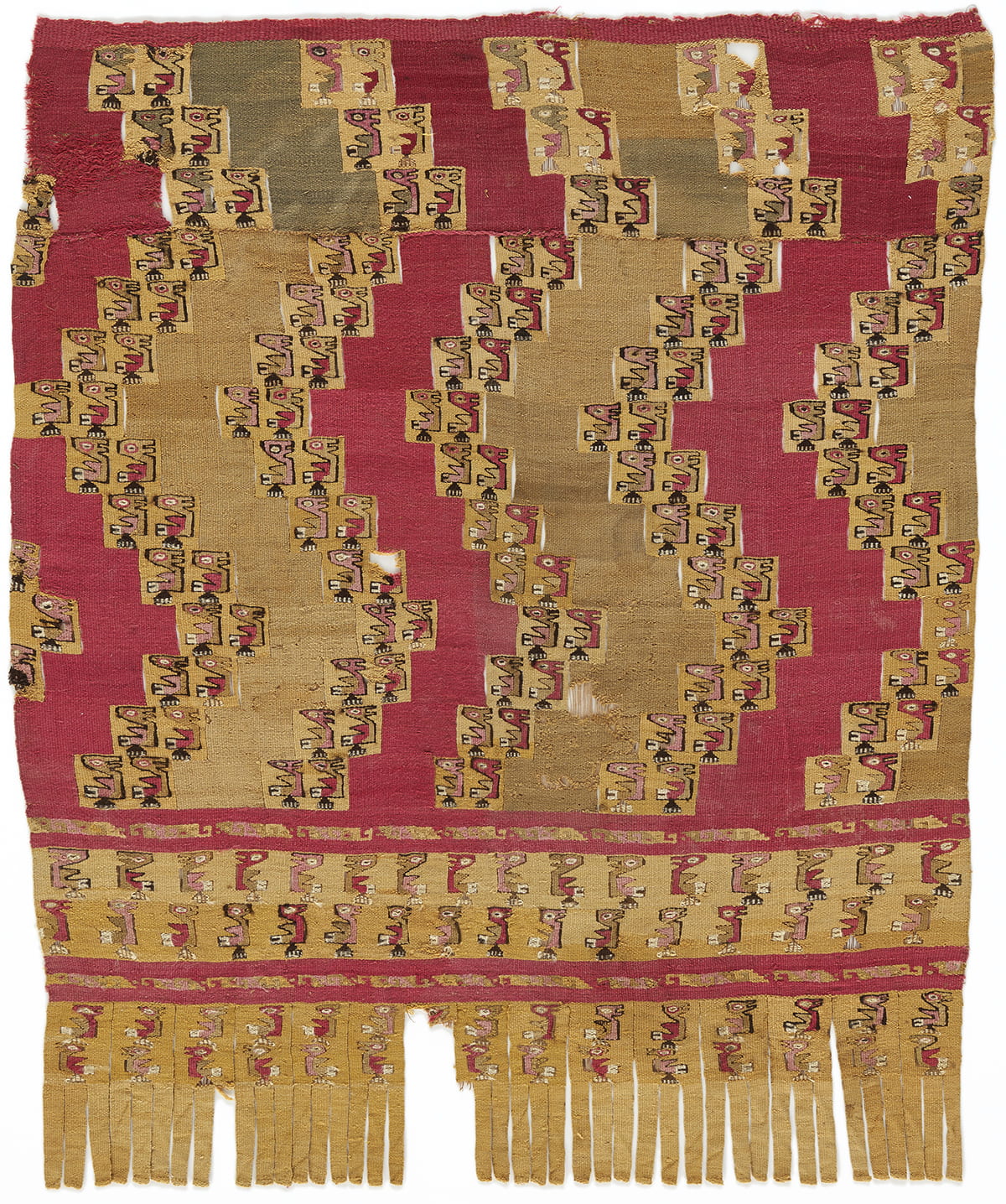The Chancay were a highly sophisticated people who lived in the Chancay Valley on the central coast of Peru during the centuries preceding the Spanish conquest in 1532. They left no written language but created thousands of beautifully executed textiles in a variety of techniques.
The Chancay grew cotton locally and used it for plain-weave cloth, as well as exquisite gauzes, mostly woven on a backstrap loom. Chancay weavers supplemented cotton with more easily dyeable and glossier camelid hair yarn (probably from alpacas) imported from the highlands, which they used to create designs in tapestry weave and supplementary weft.
This textile is the front panel of a large loincloth woven in an intricate slit tapestry technique. Loincloths were a standard part of Chancay male costume, worn together with a rectangular mantle and headwrap. Most Chancay loincloths were probably small, but large ones like this were likely worn by more distinguished men on important occasions. This panel alone is more than two and a half feet wide and gives a good idea of the original size and grandeur of the rest of the costume.
Bird motifs — ranging from realistic to very abstract — appear throughout Chancay textiles. In most cases, as here, the birds are too abstract to represent any particular species. It must have been the concept of a bird that was important, perhaps considered as a being that could fly, walk on the earth and swim in the ocean.


